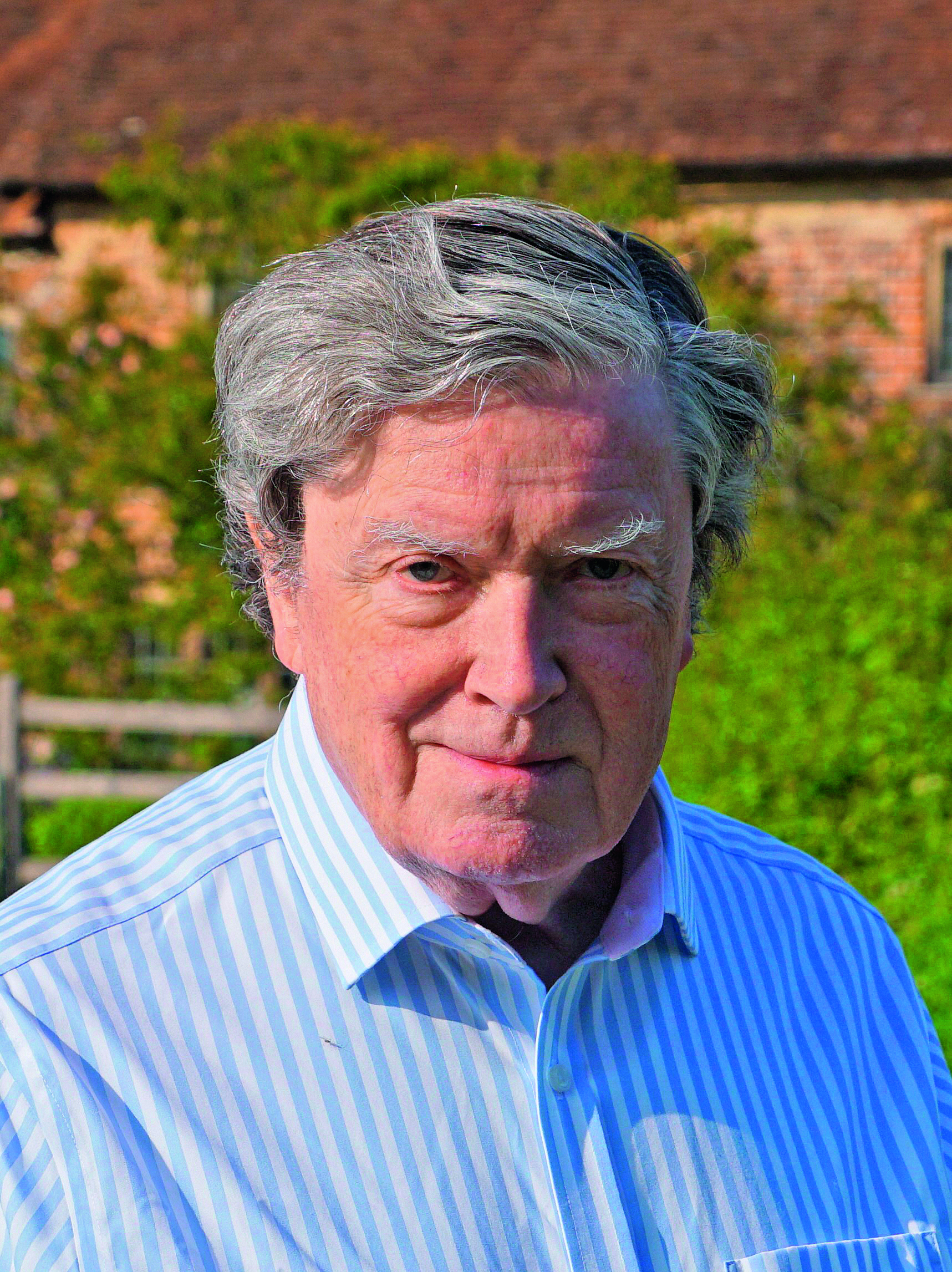The greatest rhododendron garden in Britain? A visit to Ramster, the 'woodland garden that looks as if it's existed since time began'
In its centenary year, Ramster’s reputation continues to grow, together with its magnificent woodland garden, says Charles Quest-Ritson.
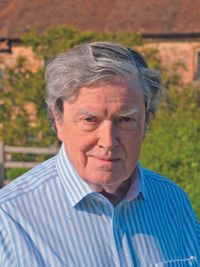
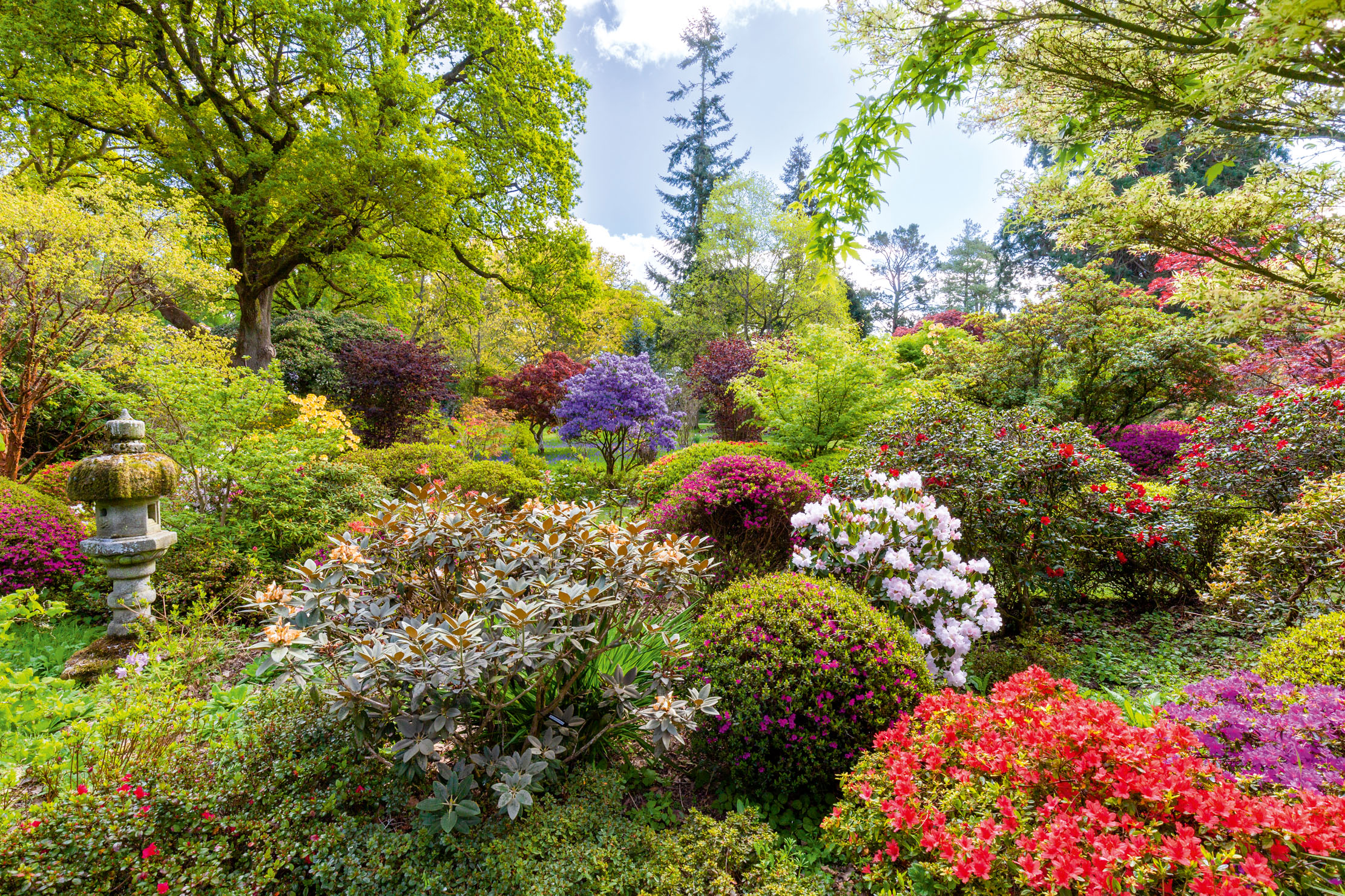
Ramster is a masterpiece of woodland gardening, carefully designed and planted to appear as natural as possible. It reaches the peak of its loveliness in May, but is truly an all-seasons garden, one of the best in southern England.
The story begins in 1900, when a Mr Waechter (later Sir Harry) bought a farm named Rams Nest, near Chiddingfold in Surrey, with a view to what we would now call gentrifying it. The Arts-and-Crafts Movement was then at its height. Sir Harry re-modelled the house in the Surrey vernacular celebrated by Gertrude Jekyll, and, at the same time, started to plant a woodland garden among the native oak-trees. Jekyll's recent book Wood & Garden (1899) provided the inspiration and the method.
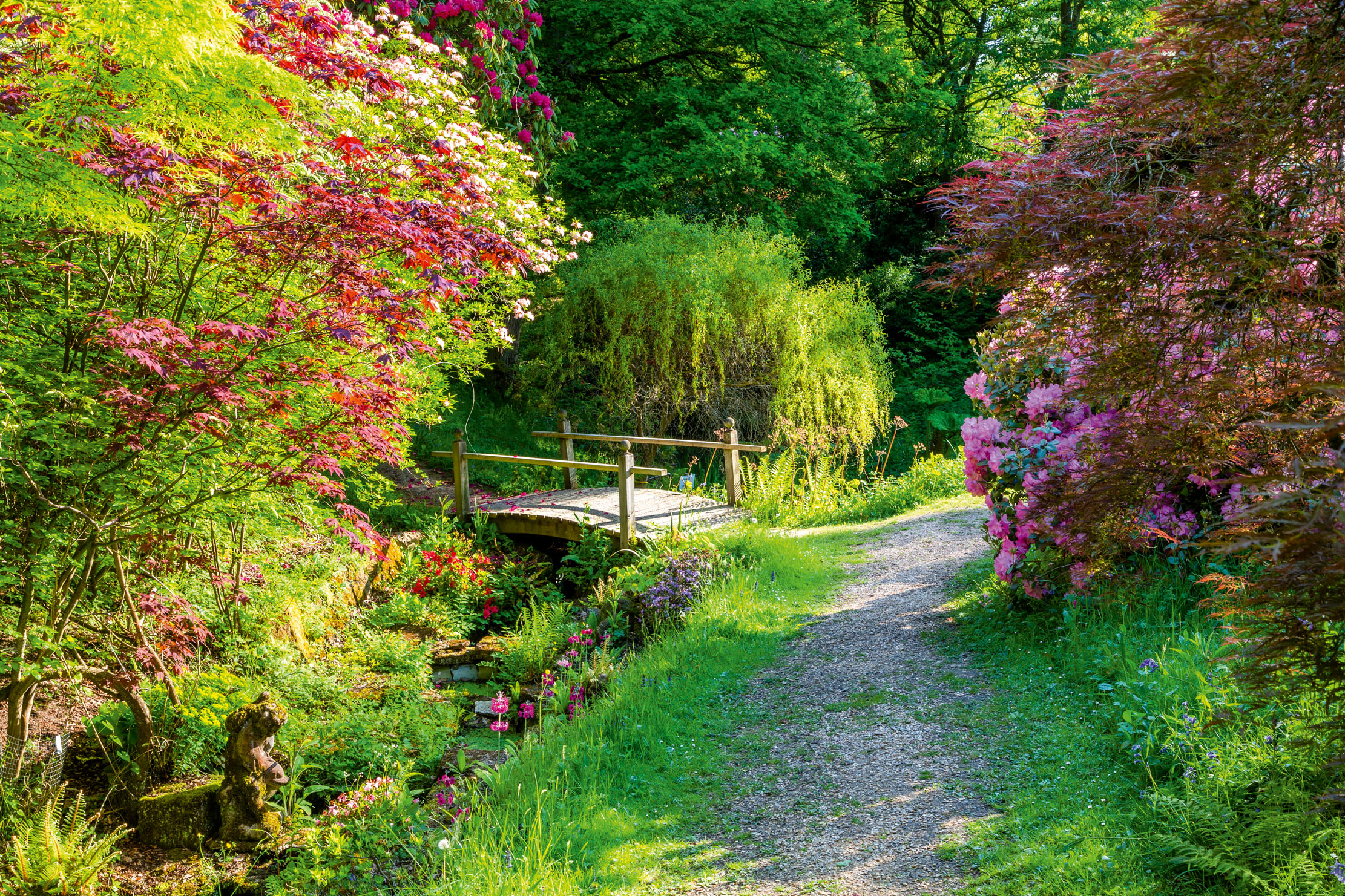
A near neighbour of Rams Nest was Gauntletts Nursery, famous in its day for stocking all the desirable new plants coming out of China and Japan. Sir Harry employed Gauntletts to supply many of the plants for his garden, including Japanese maples (forms of Acer palmatum, now very substantial plants), venerable evergreen azaleas and tall bamboos, for a stylised Japanese garden with traditional stone lanterns and Zen cranes, symbols of longevity. All are still important elements of the garden today.
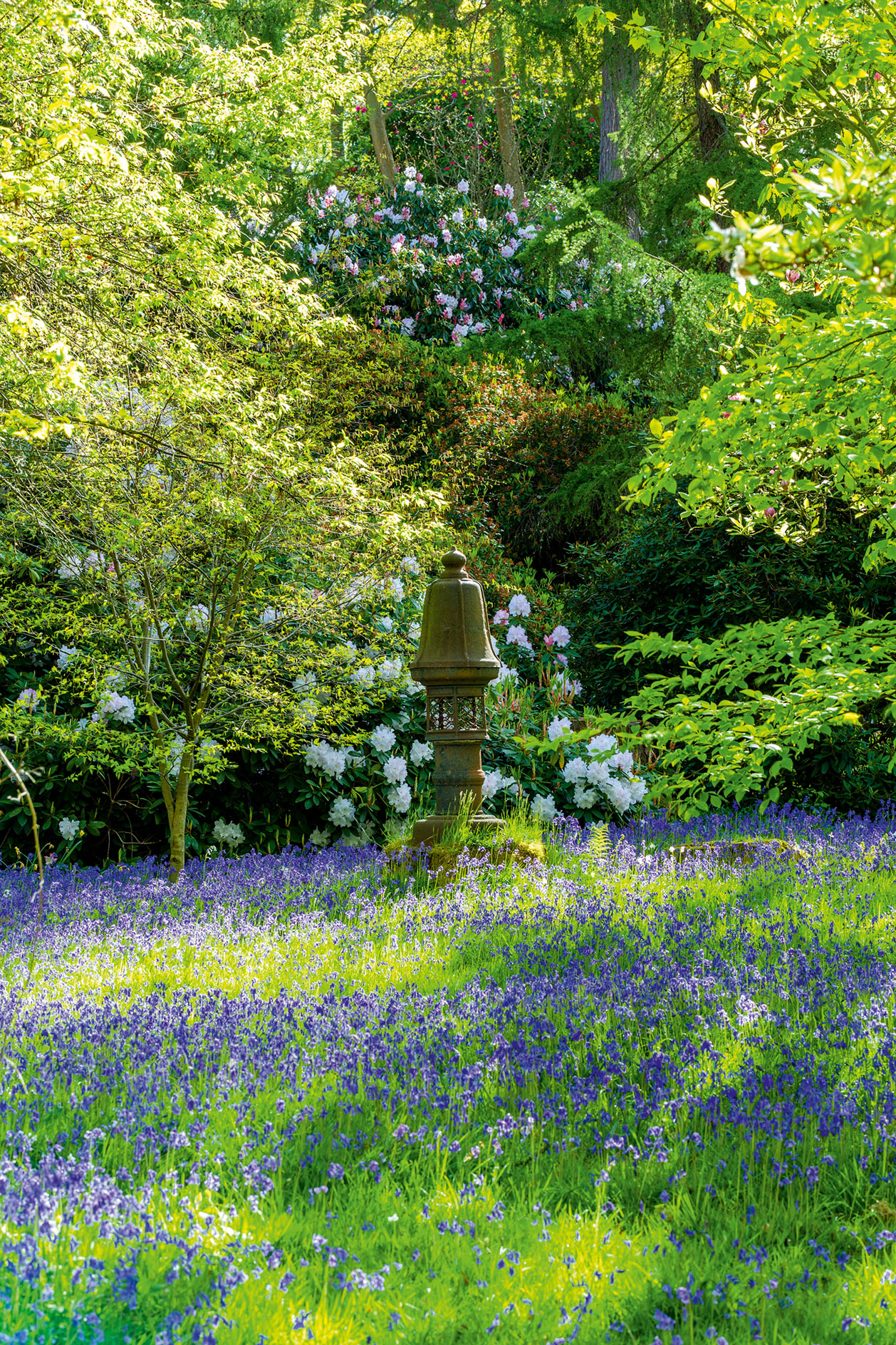
When Sir Harry sold Rams Nest in 1922, his garden was already renowned for its woodland plants and extended to 25 acres. The buyer was Sir Henry Norman—journalist, businessman and MP—who changed the name of the house to Ramster. Norman’s wife, the Hon Florence Priscilla McLaren, had been brought up at Bodnant, in north Wales, as the daughter of the 1st Lord Aberconway.
Lady Norman was a passionate plantswoman, and set about improving Ramster’s garden for nearly 40 years. In 1927, it was one of the 607 gardens that opened for the first year of the National Gardens Scheme (NGS). Only two of those original gardens have opened every year since then—Ramster and Sandringham.
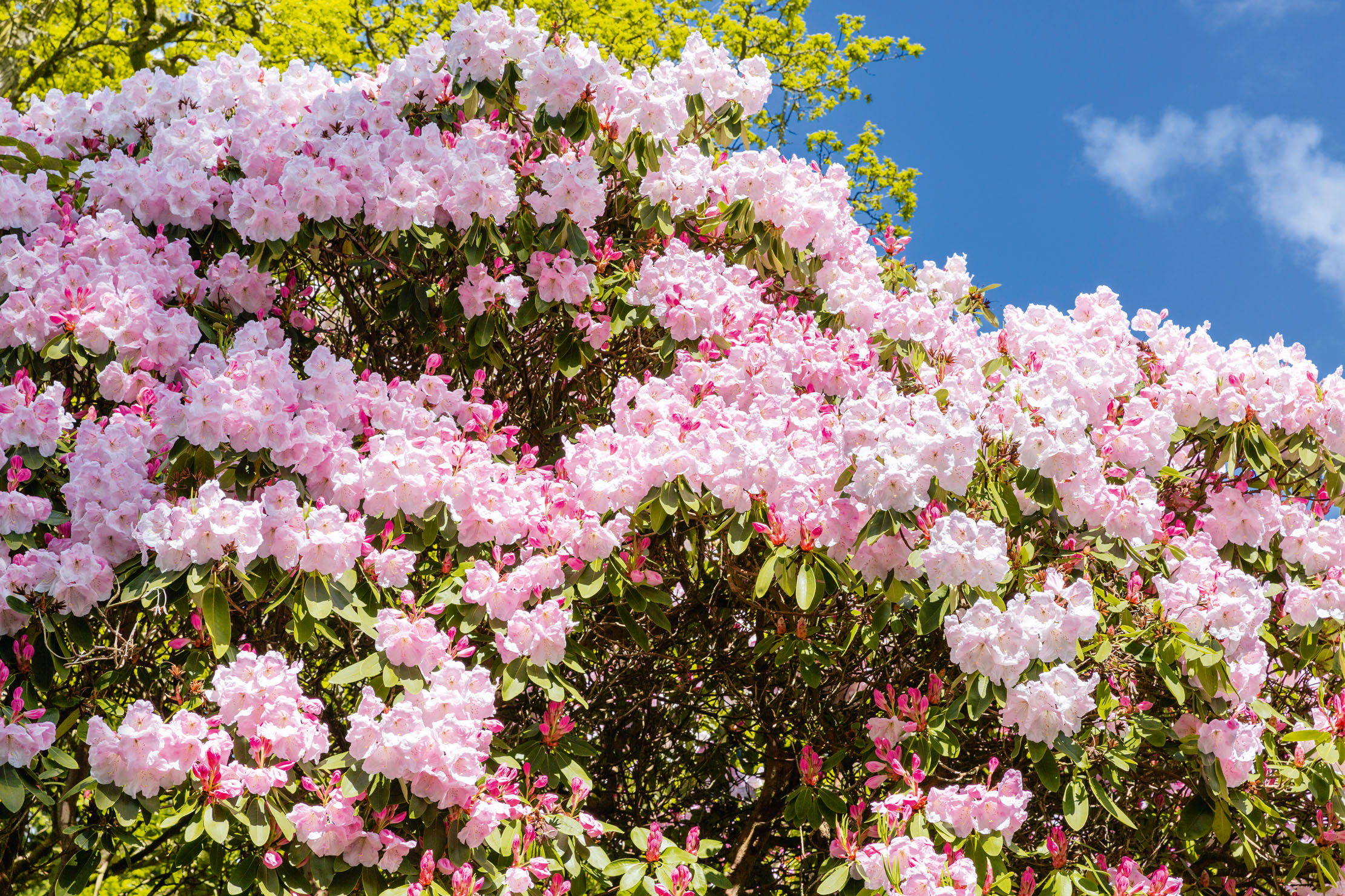
The soil at Ramster is Wealden clay with pockets of greensand. The clay is slightly alkaline, but the virgin woodland has built up such an accumulation of leafmould that almost all the rhododendrons planted over the past 100 years have flourished. Rhododendrons were one of Lady Norman's passions. She was also an enthusiastic propagator and hybridiser.
Plants of all sorts arrived from her brother, Harry, who subscribed to some of the great plant collectors' expeditions to China. Much of Bodnant’s surplus found its way to Ramster.
Exquisite houses, the beauty of Nature, and how to get the most from your life, straight to your inbox.
Many of the large rhododendrons at Ramster were planted by Lady Norman in the 1920s and 1930s. Most spectacular are the delectable, strongly scented Rhododendron × loderi hybrids, some with russet trunks stretching 20ft in height.
There is no better place to learn about them: 'King George' is the loveliest, but 'Pink Topaz, 'Pretty Polly, 'Pink Diamond', 'Game Chick' and 'White Diamond' are all present as venerable beauties nearly 100 years old. And it is when the rhododendrons are flowering—alongside hundreds of trees and shrubs—that the garden reaches its pinnacle of beauty.
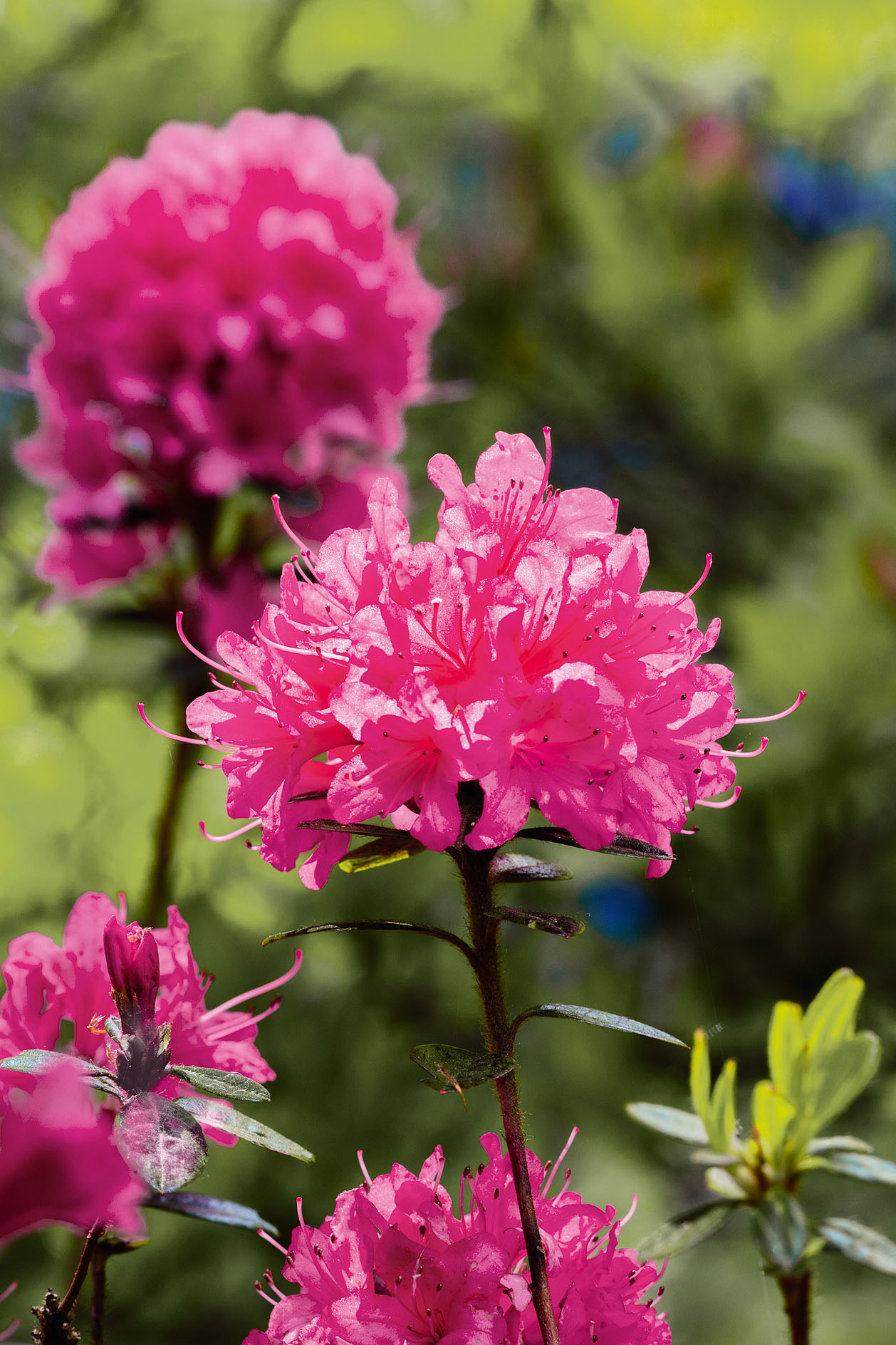
Ramster’s oldest rhododendrons have grown to a momentous size. The driveway is lined with leggy specimens of deep pink, speckled R. 'Cynthia'. R. calophytum (the name means 'beautiful face') is one of the earliest species to flower, at the same time in March as blood-red R. thomsonii and cream-coloured R. campylocarpum. Later come sumptuous R. 'Boddaertianum', with white flowers for weeks on end, and a triple-trunked specimen of super-hardy R. 'Loder’s White'.
Quite apart from their beauty, it is their size that is so astonishing—they create the impression that Ramster's woodland garden has existed since time began.
Walking through the garden reveals a sequence of compositions and viewpoints, not least the views down to the lake with its colours and reflections. The native oaks are supplemented by exotic trees and shrubs that intensify the beauty of the woodland. Liriodendron tulipifera, the American tulip tree is here, along with the Persian ironwood Parrotia persica, flowering dogwoods such as Cornus ‘Norman Hadden’, massed azaleas, corylopsis, magnolias, liquidambars, kalmias and many more.
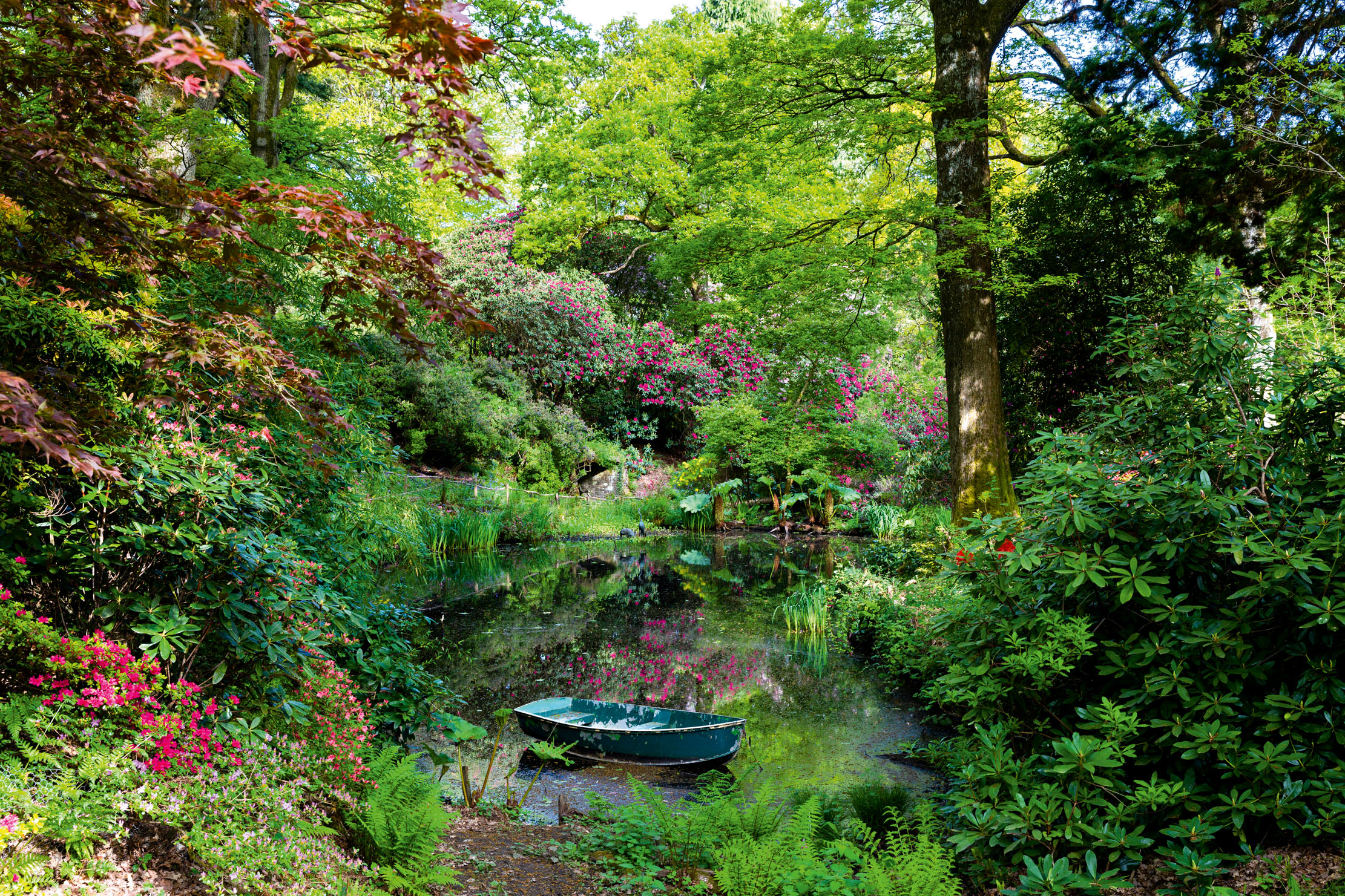
Grassy glades, swathes of wild daffodils and carpets of wild bluebells remind us that Ramster is still an English woodland into which so many beautiful exotics have been inserted.
Many of Ramster's older trees are now 'champions', exceptional for their height and girth. The noble spruce, Abies grandis from America's Pacific north-west, is nearly 165ft tall here and two California redwoods, Sequoia sempervirens, both well in excess of 130ft.
A majestic wellingtonia, Sequoia giganteum, is also among the giants, as is a soaring Atlantic cedar, Cedrus atlantica 'Glauca', near the entrance to the woodland. One of the earliest trees to flower—starting in February—is a magnificent 50ft Magnolia campbellii, grown from a 'Chinese' Wilson collection.
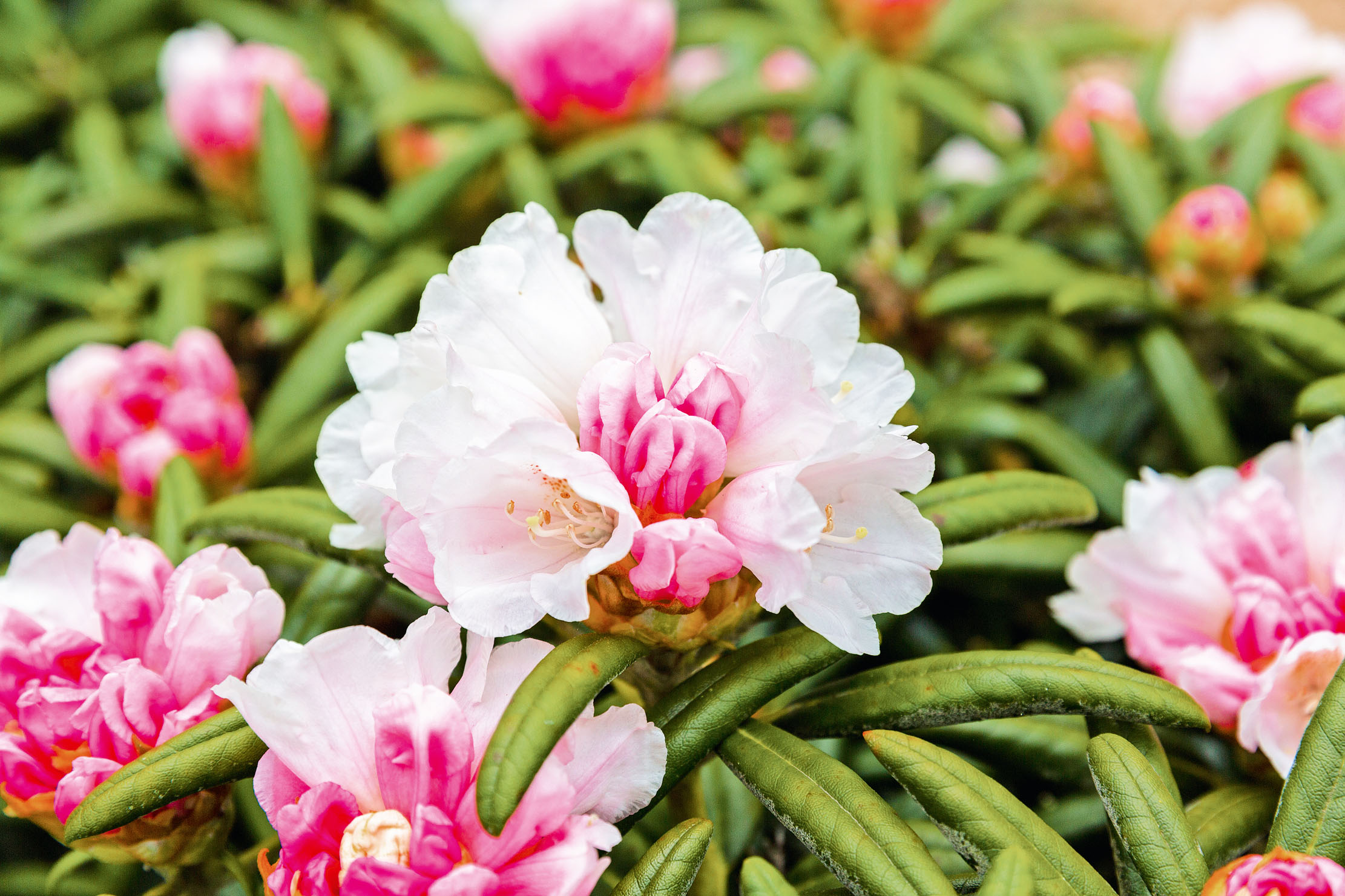
As with any good garden, there is a succession of plantings to give pleasure throughout the year and the display starts with some 100 different camellia cultivars.
After the rhododendrons, a good collection of hydrangeas takes over, while Heptacodium miconioides is impressive in late summer. Autumn colour begins with some of the many Japanese maple cultivars, followed by forms of Cotinus coggygria, birches, American oaks, the paperbark maple Acer papyrifera, amelanchiers, dogwoods, liquidambars and much more.
Lady Norman inherited from her mother the Château de la Garoupe near Antibes to whose warmer climate she retired in 1960. Ramster was then managed by her daughter, Rosalind, Lady Burke, until the Burkes' daughter Miranda Gunn took over the garden in 1968. Miranda and her husband, Paul, realised that they had to start by clearing away the unwelcome plants that had grown too well in recent years. Bamboos had formed vast colonies, and Japanese knotweed was romping away.
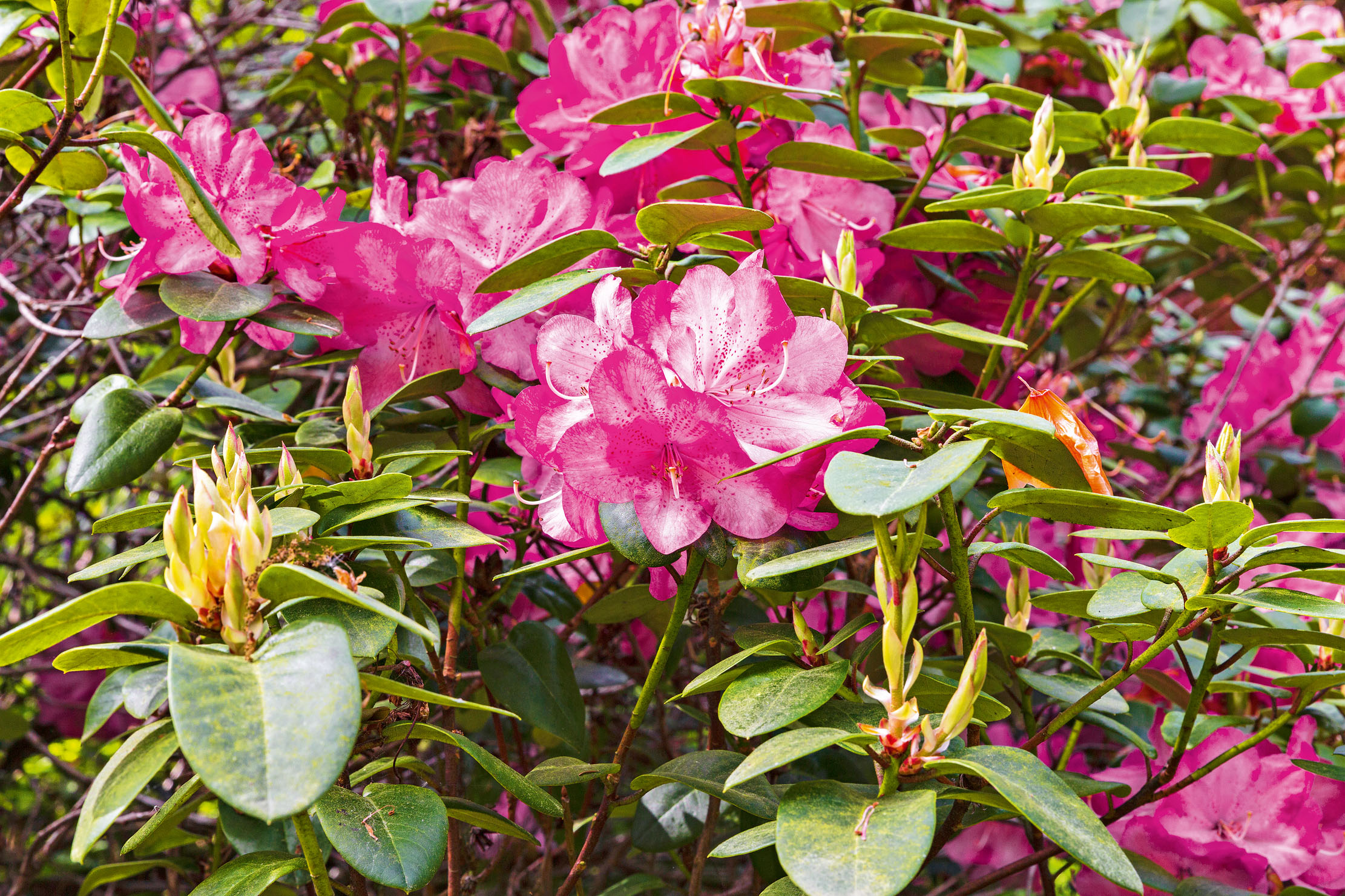
They were successful in reducing the bamboos and completely exterminated the noxious knotweed. They needed also to identify and label every plant in the garden—not an easy task, since they knew what had once been planted, but usually there was nothing to say just where it had been planted and whether it had thrived or died.
The labelling today is accurate and comprehensive, though one or two mysteries remain, including a thicket of moderately sized of rhododendrons in in endless shades of pink and orange that Mrs Gunn concludes arrived from Bodnant as seedlings of 'Fabia', a stunning hybrid between R. dichroanthum and griersonianum.
Further unnamed rhododendrons may be seedlings that came from Lady Norman's own crosses. Mrs Gunn has recently registered one of her grandmother's hybrids between R. campylocarpum var. elatum and R. griffithianum, and given it the name 'Fay Norman'.
No good garden stands still, and Ramster today is a flourishing enterprise, with new projects, plantings and improvements every year. While the estate has been managed as a successful commercial enterprise since 2005 by Miranda Gunn's daughter Rosie Glaister—herself a budding gardener—Mrs Gunn remains the creative force behind the garden’s constant reinvention.
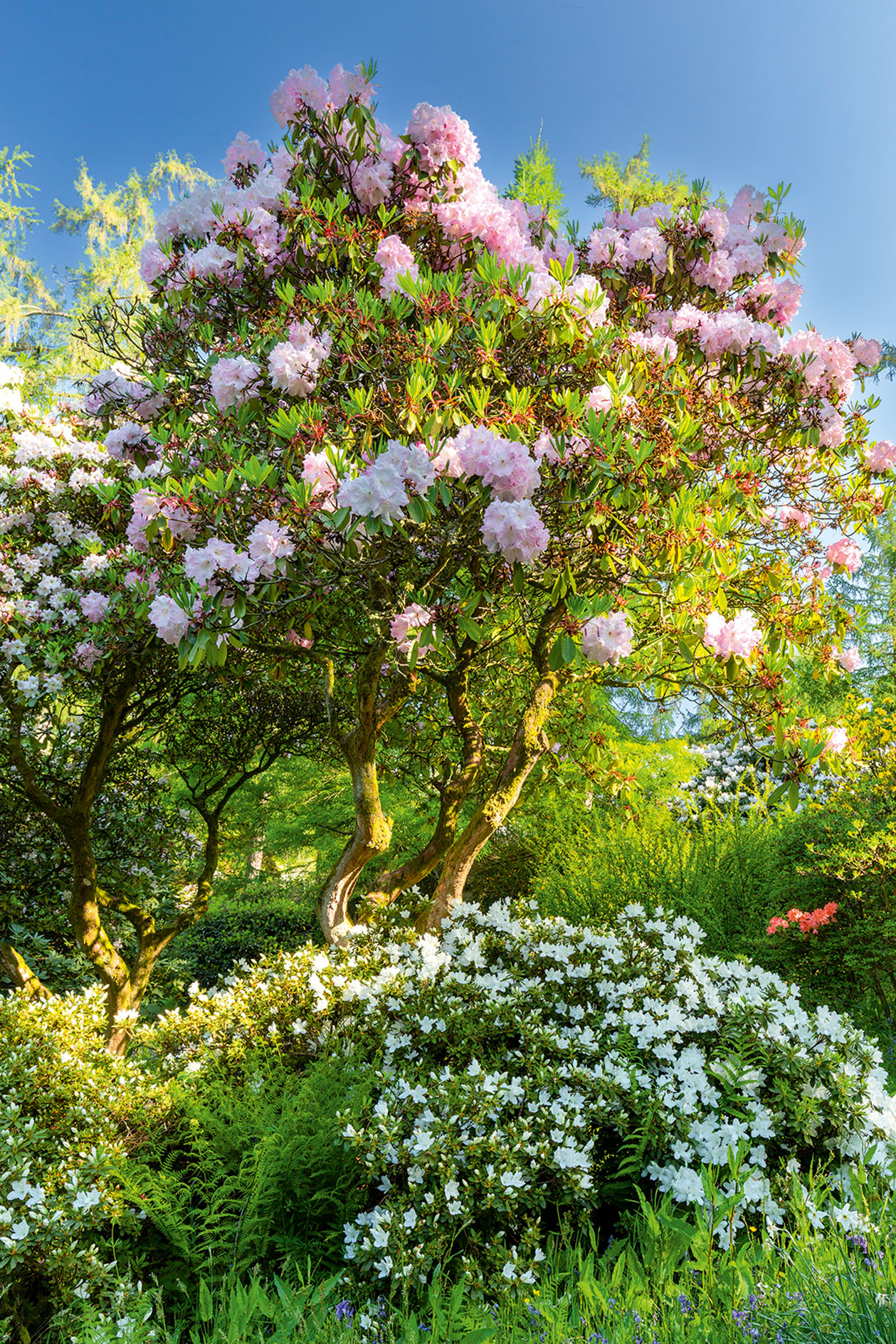
The tennis court has been converted into a garden of contemplation, with pots and seats around a central fountain. Last year, Mrs Glaister made a new garden of summer-flowering herbaceous perennials, to increase the overall horticultural interest.
This year, a new Centenary Garden will open in May to celebrate 100 years of the family at Ramster; it compares original plants in Gauntletts Catalogue with their modern equivalents.
The Gunns are interested in sculpture and commissioned Christine Charlesworth to create a charming group sculpture in bronze resin of five of their grandchildren playing a game of 'Oranges and Lemons'.
The family also like to commission chainsaw artists to make whatever is possible from a fallen tree. Simon Groves transformed a felled Douglas fir Pseudotsuga menziesii, into a family of wild boar, with three piglets, and more recently a fallen redwood into a magnificent Dragon seat.
As with all woodland gardens, honey fungus is a problem, but it tends to attack plants that are already weakened—perhaps even dying—so the only solution is to accept the damage and plan a less susceptible replacement. Ramster is full of young trees and shrubs that bear the promise of future excitements. And the 25 acres are now meticulously maintained by only two full-time gardeners, with as much input from the family as possible.
They understand that it is important not to let the garden appear too manicured. The romance of Ramster lies in the brilliantly sustained illusion that, for all the glory of its plantings, Nature is just about to get the upper hand and take over from the skills of its creators.
Ramster, Petworth Road, Chiddingfold, Surrey, is open to the public (01428 654167; www.ramsterevents.com)
The Aberconway gardening gene
Lady Norman was born to the horticultural purple. Her mother Laura Aberconway made the gardens at Bodnant, Conwy, and Château de la Garoupe, the most famous Edwardian garden on the Riviera.
Her brother Harry, 2nd Lord Aberconway, continued to develop Bodnant and was president of the RHS from 1931 to 1953, as was her nephew Charles, 3rd Lord Aberconway, a great plantsman, from 1961 to 1984. Lady Norman's son Antony expanded and intensified his grandmother's garden at Garoupe. Her granddaughter Miranda Gunn keeps a watching brief on Ramster.
Her great-nephew Sir Kenneth Carlisle, another plantsman, has made the best late-20th-century garden in Suffolk at Wyken Hall.
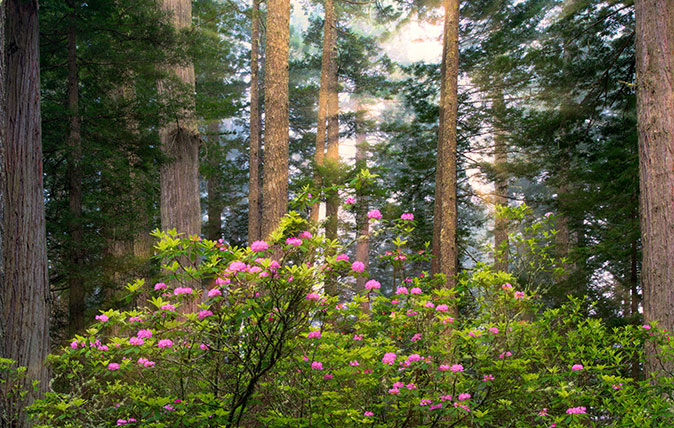
Credit: Dennis Frates / Alamy Stock Photo
Alan Titchmarsh: Finally, a chance to nurture and grow some rhododendrons
Alan Titchmarsh had resigned himself to a life without rhododendrons – but now that's all about to change, courtesy of
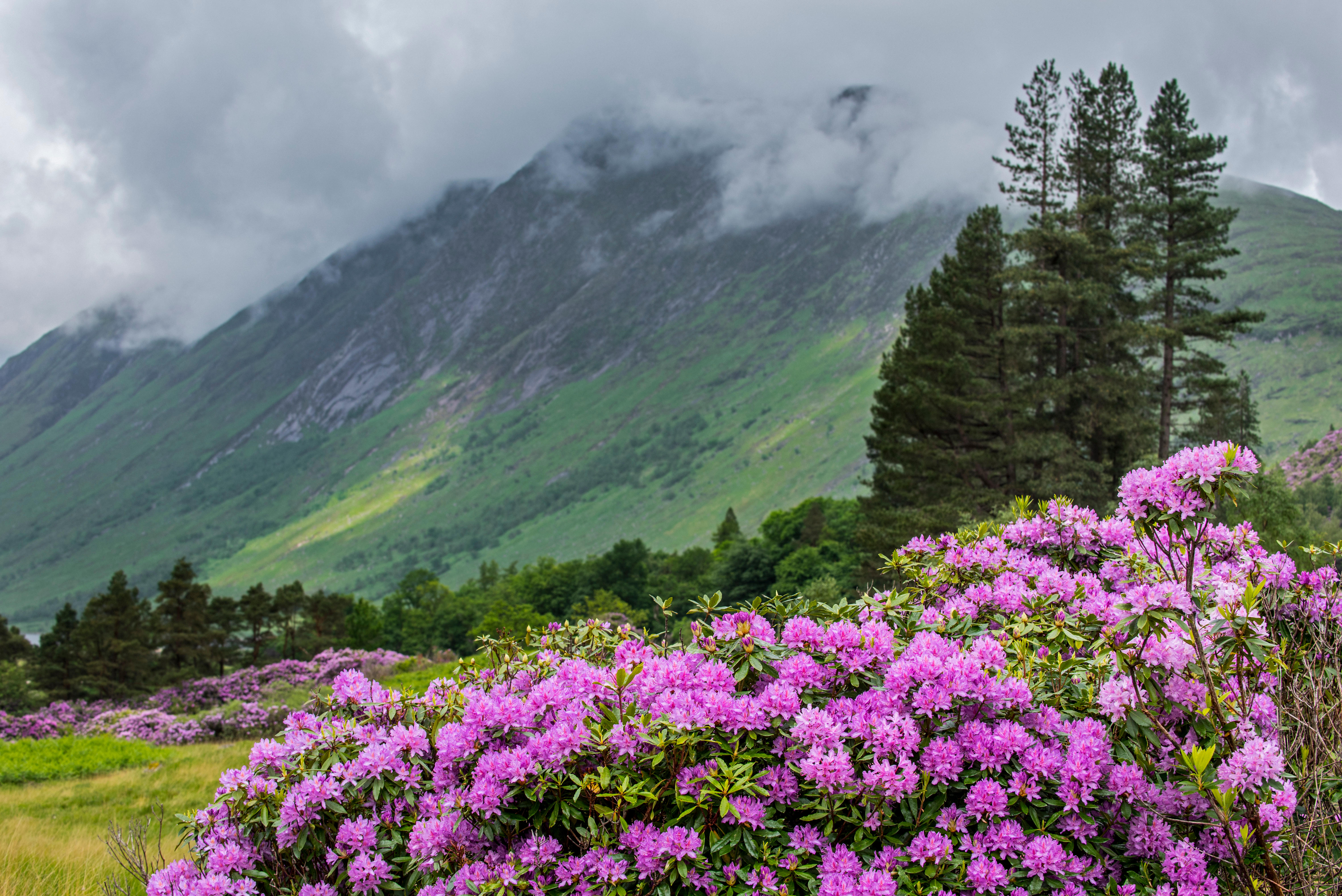
Credit: Alamy
Rhododendrons: A beautiful excuse to lose the battle against invading flowers
Charles Quest-Ritson explains why these gorgeous purple flowers are not such a bad thing, really.
Charles Quest-Ritson is a historian and writer about plants and gardens. His books include The English Garden: A Social History; Gardens of Europe; and Ninfa: The Most Romantic Garden in the World. He is a great enthusiast for roses — he wrote the RHS Encyclopedia of Roses jointly with his wife Brigid and spent five years writing his definitive Climbing Roses of the World (descriptions of 1,6oo varieties!). Food is another passion: he was the first Englishman to qualify as an olive oil taster in accordance with EU norms. He has lectured in five languages and in all six continents except Antarctica, where he missed his chance when his son-in-law was Governor of the Falkland Islands.
